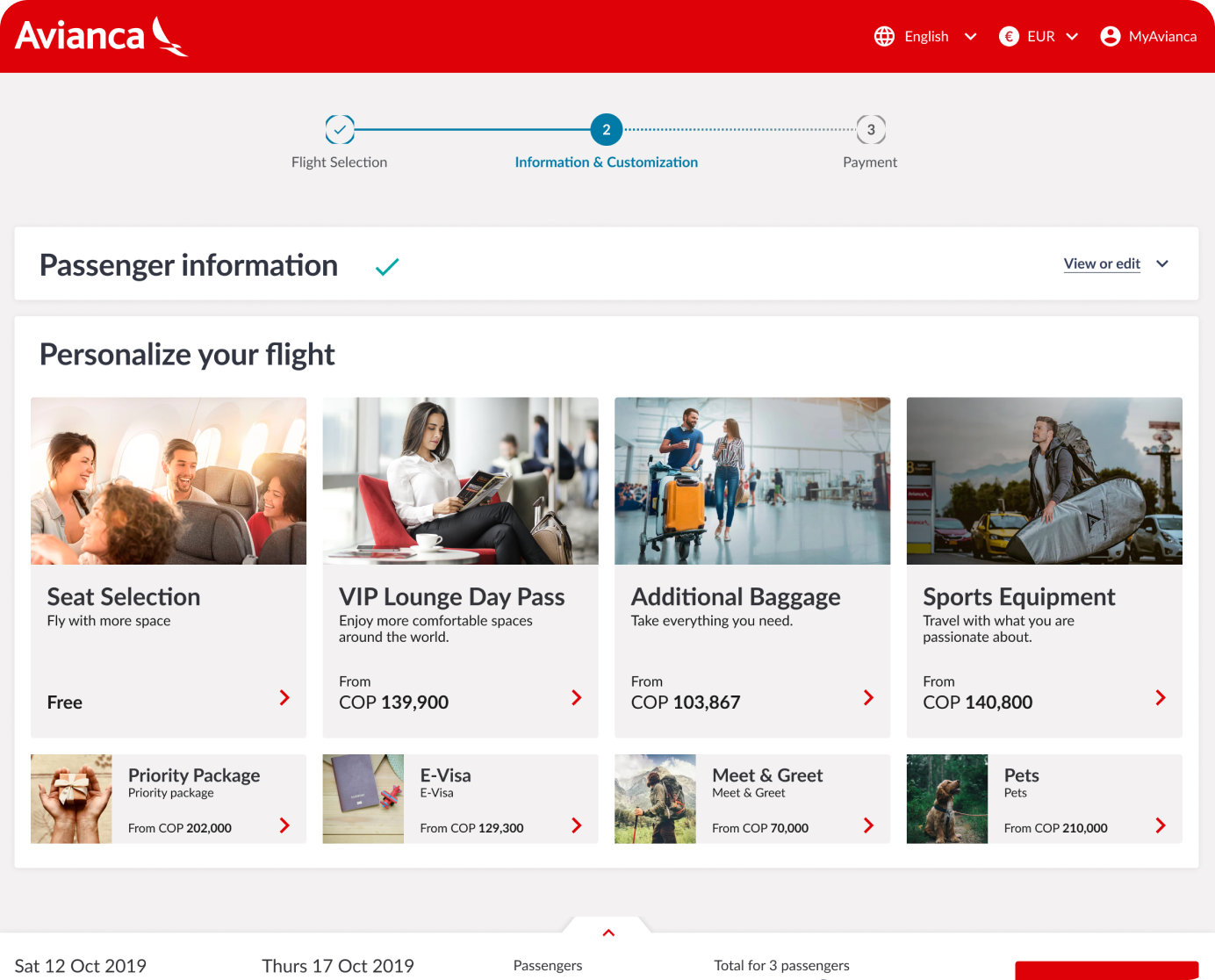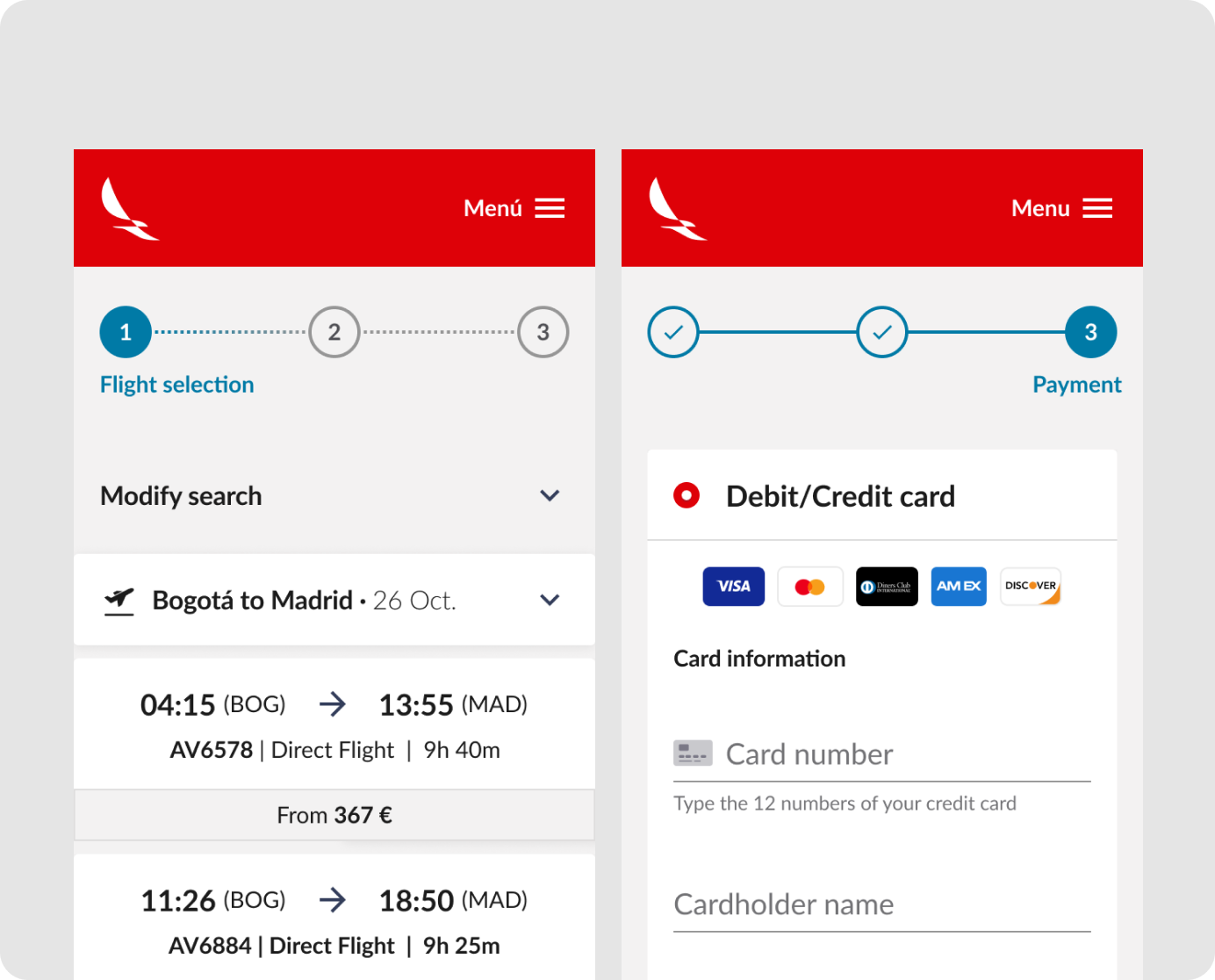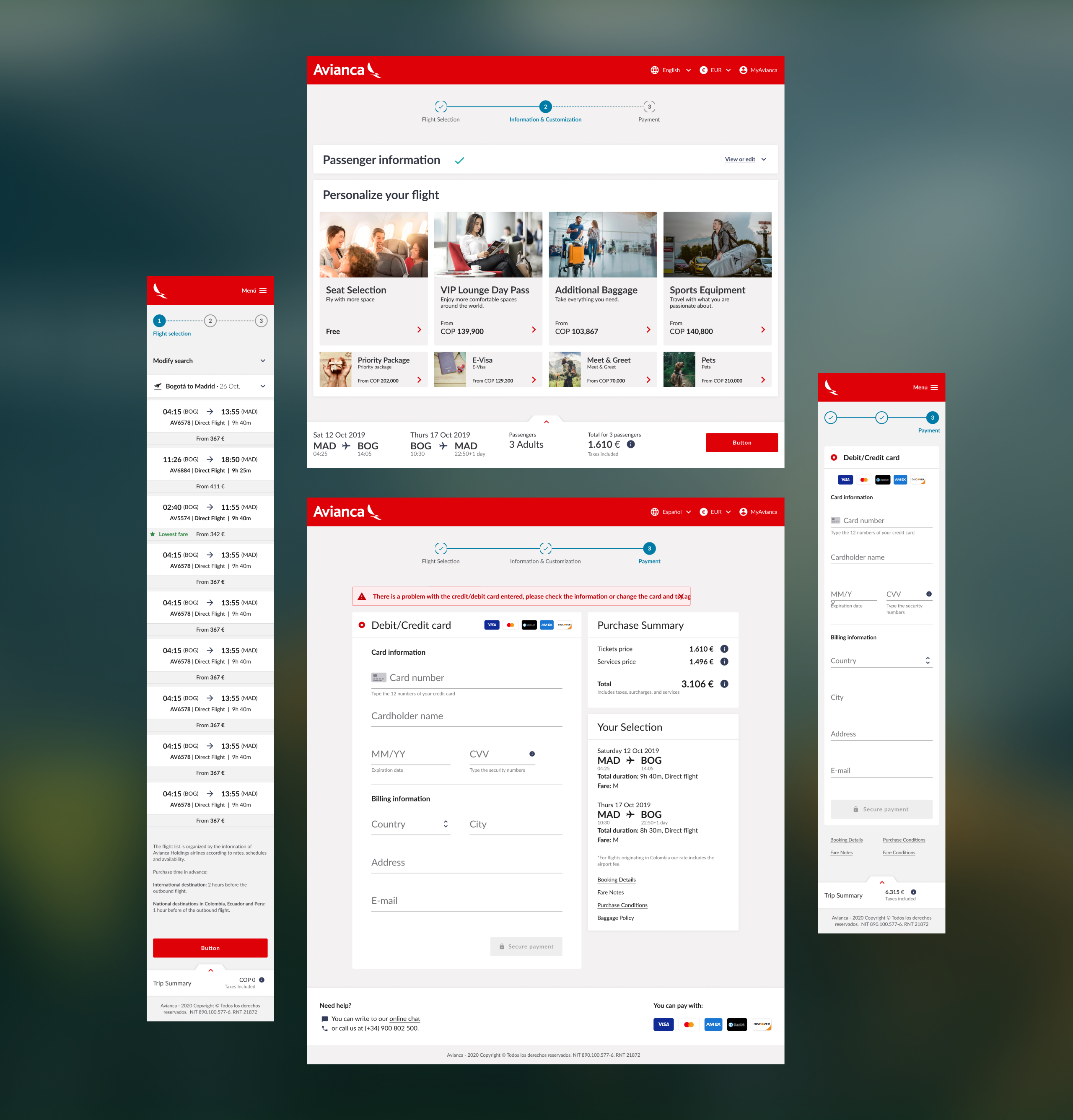
New booking flow experience
This project comprehended strategic design tasks performed to provide direction to future design stages, aiming to target clear user needs and opportunities of improvement.
Role Associate Design Manager
Capabilities Service Design, UX, UI
Year 2018
Client Avianca Airlines
Company Accenture


The challenge
In 2017, facing significant economic challenges from a surging low-cost airline market, Avianca Airlines recognized that its existing marketing strategies were failing to drive growth.
This project was initiated to redefine Avianca's approach, starting with a comprehensive benchmark. This analysis not only identified competitive feature gaps but also uncovered opportunities for the brand to forge deeper, emotional connections with its customers. The insights gained informed an "as-is" analysis, which then guided the development of a strategic "to-be" high-level wireframe flow, ultimately culminating in detailed wireframes and mockups that set the visual direction for the project's final outcome.
The benchmark
We studies over 20 brands that use booking flows during our research. 5 airlines and 4 travel-related brands were deeply analyzed, using both qualitative and quantitative approaches. The benchmark covered 2 perspectives: functionality completeness and emotional engagement.
Functionality completeness was measured by counting how many specific features are present out of 47 defined features.
Emotional engagement was measured under 3 service metrics: usability, purposefulness and relevance across customer journey phases: attract, engage and exovle.

As-is analysis
Before starting wireframing and mockup processes we did a thorough analysis were pain point within each step across the booking flow were mapped. Having those pains identified enabled us to address the main issues user face while trying to book a flight that led to a high churn rate.
Most of pains were identified across the interaction when the user is adding their info and extra services. The most painful point was identified across the payment step.Having these areas clearly identified help us lead direction with product designers on where to have attention to detail when crafting the experience.

To-be highlevel
Blocking wireframes were created to illustrate in an easy and tangible way the multiple insights discovered during the benchmark and the as-is journey analysis. The artifact was used to drive stackeholder alignement prior to start the detail design phases. Doing this sped up the entire process significantly.

Detailed wireframes
Created informating each specific interaction across the entire booking flow, from search to payment. Each specific pain was addressed using information and insights from the discovery phase.
The wireframes enables visual designers to get focused on visual matters intead of interaction or pending definitions.

UI design
The final step of the process involves creating high-fidelity mockups. These mockups meticulously detail every visual and interactive element, serving as the definitive guide for engineers to build the intended user experience. All design decisions within these mockups were directly informed by insights gathered during the discovery phase.

@2024